As Nigeria goes through the challenge of economic reforms, solving the challenge of the access of MSMEs to finance and credit is critical to ensuring that the benefit of reform is more inclusive. A radical leap in MSME access to finance will also moderate the short-term tendency of economic reform to disproportionately weigh on the MSMEs and low income, thereby ensuring that all boats are lifted together to more widely shared prosperity. A flywheel of concert and complementary initiatives, which have been discussed here will be needed to solve the challenge of MSMEs access to finance in Nigeria sustainably.
Nigeria is estimated to have about 40 million MSMEs, most of which are in informal trade. With formal financial inclusion at 64 per cent, according to the EFINA Access to Finance Research (December, 2023), skewed largely towards mid and upper income urban demographics, it can be assumed that most MSMEs in Nigeria are not included in the formal financial system. Most of the MSMEs would be micro enterprises employing two or three people, informal, unstructured and would largely trade or do business in the personal names of their founders. MSMEs in Nigeria are estimated to contribute 50 per cent of Nigeria’s GDP and they generate 88 per cent of employment.
Providing inclusive access to finance for the 40 million MSMEs in Nigeria is critical to ensuring that we have a Nigeria that works for many more people, and one in which prosperity is more widely shared. A more inclusive financial system for MSMEs will also ensure that the benefit of current economic reforms impact the widest segments of the Nigerian population, translating the short-term pains of the economy more quickly into much widely shared prosperity. It will generate strong positive externalities for the larger economy in accelerated GDP growth, employment and expanded market demand for business, which will create a further reinforcing loop of more employment, demand, investment and prosperity for Nigeria households and businesses.
There are eight challenges that we need to tackle to break the barrier in access to finance for MSMEs in Nigeria. These barriers are as follows:
1. Closing the wide gap between digital identity and ownership of financial accounts: Digital identity is the foundation stack in the financial system on which the payment, credit and other stacks in the financial system are built. It implies that efforts to create an inclusive payment or financial system for MSMEs will be constrained by the reach, pervasiveness and inclusion of Nigeria’s formal digital identity system. MSMEs are typically unregistered and informal. Most MSMEs do business in their personal names. Hence the basic digital identity for individuals is also what MSMEs need as their personal and business lives are significantly intertwined.
An effective payment rail in the digital financial system must know who is sending money and who is receiving the money being sent. This simple but effective digital identity system is also the first layer of building a secure payment system that prevents fraud, and which users trust and will recommend to others. Building trust in the digital financial system is particularly important to MSMEs, which would be using formal digital financial payments for the first time, for which concerns about fraud could be a significant barrier to adoption and usage.
Formal digital identity is also the first data point in credit scoring in digital finance, which along with payment and cashflow data of a formally identified customer, provides the information for the credit stack of the digital finance system. Essentially, who is borrowing and what does their payment and cashflow information say about them in determining the credit they could access.
Nigerians need credible journalism. Help us report it.
Support journalism driven by facts, created by Nigerians for Nigerians. Our thorough, researched reporting relies on the support of readers like you.
Help us maintain free and accessible news for all with a small donation.
Every contribution guarantees that we can keep delivering important stories —no paywalls, just quality journalism.
The government of Nigeria and the National Identity Management Commission (NIMC) must be commended for the very significant progress made over the last six years in pushing the reach of the Nigeria National Identity Number (NIN). The Central Bank of Nigeria as the financial system regulator must also be commended for the progressive regulation in Know Your Customers (KYCs) that have now included NIN, which presently has a bigger reach than the Bank Verification Number (BVN). There are about 62 million Nigerians on the BVN, with an estimated three million additional accounts contributed by NIN (non BVN) customers, which implies that just about 65 million adult Nigerians own a formal financial account.
The NIN has, however, grown very fast in the last six years, with more than 107 million Nigerians formally registered as at April on the NIN database, with biometric information tied to their phone numbers, according NIMC. This indicates a very strong progress in the delivery of inclusive digital identity. This implies an at least 40 million people gap between digital identity and formal financial account ownership. EFINA Access to Finance Research 2023 actually reports that there are 28 million Nigerians with digital identity, who do not have financial accounts. It represents a potential low hanging fruit to accelerate the growth of formal financial accounts over the next three years and bring an additional 30 million Nigerians, most of whom will be nano and micro MSMEs, into the formal financial system.
This will need a strong ecosystem collaboration between the Nigeria InterBank Settlement System (NIBSS), NIMC, banks, fintechs, telecommunications companies, and regulators of financial services and telecom industries, to find and locate these excluded 30 million Nigerians, who already have digital identities and a phone number, and bring them into the formal financial system. The NIMC and NIBSS partnership on the Afrigo project, working with the larger ecosystem players, has a strong potential to deliver this mandate, if the Afrigo project remains inclusion mission-focused and driven, with the potential to deliver an outsized social impact and large positive economic externalities.
2. Accessible and affordable merchant collection solutions that can scale and reach millions of MSMEs: Forty-seven per cent of adult Nigerians who would largely be MSMEs, do not have transactional accounts to receive/collect digital payments or pay someone else, according the EFINA Access to Finance Research in December 2023. This was so self-evident during the cashless exercise of January 2023, when millions of nano, micro and small businesses (MSMEs) were completely paralysed, and could not trade because they couldn’t collect digital payments. If we would enable our 40 million micro and small merchants to collect digital payments, we will need merchant collection solutions that are affordable for the sizes of their businesses, and that will also appropriately scale up.
Cards and traditional Point of Sales (PoS) terminals that are deployed in Nigeria for merchant collections, where the PoS terminals cost about a hundred dollars each are expensive and cannot scale up to serve millions of small merchants. A hundred-dollar terminal cost, with a depreciating naira that makes PoS terminals ever more naira-expensive, implies that PoS merchant collections solutions are exclusive and only available to large merchants, where the unit economics of terminal cost could be justified. Yet, providing digital solutions that enable millions of MSMEs to get paid conveniently could be a powerful method to get millions of informal MSMEs digitise their payment collections and establish digital payment footprints for their business.
Essentially, we are collectively as an ecosystem not doing a good job of leveraging the growth of the payment system to grow access to credit. More fine-tuned open banking regulations that will encourage or compel collaboration of traditional financial services players, to open their customer base (with customer consent) to fintechs which wish to lend to their underserved/unserved potential credit customers (who are largely MSMEs), could potentially close the large and growing jaw-graph gap between payment and credit, along with other complementary initiatives.
Such offline digital payments would be the precursor of their online payment collections, as they get comfortable with digital technologies and extend their businesses online. Digital payment collections also improve the formalisation and business efficiency of the small merchants, enabling them to access software as a service tool, like inventory and working capital management, as they scale up, while providing the digital payment and cash flow data to access credit.
The large acceleration and adoption of “pay by transfer” over the last three years, whereby any small merchant can print and paste its account numbers on its wall for the transfer of payments by customers – an adaptation to the challenge of the cashless period – suggests clearly that MSMEs will adopt digital payments if they are affordable, convenient, and mutually accessible by them and their customers. However, millions of micro and small businesses not yet included will need to have formal financial or transactional accounts, especially in the North, peri-urban and rural Nigeria, where financial exclusions are very high. “Pay by Transfer” represents a precursor to future more convenient and faster QR payments that will even be more ubiquitous, leveraging a stacked and coordinated inclusive national digital identity and payment infrastructure system.
Other PoS alternatives, such as tap and pay, whereby the android phone of the merchant could serve as a payment collection terminal, should also be pushed. An additional benefit of the QR and other non-card account to account merchant collection and payment solution is that the customer pays the collection fee, rather than the merchant who would be typically charged 0.5 per cent of the collection, popularly known as the Merchant Service Charge (MSC) for card payments. For the MSMEs, the MSC may be significant relative to their trade margins and may be a disincentive to the use of digital payment collections.
3. Reliable public and private payment infrastructure: When MSMEs do digital payments and the transactions fail due to payment infrastructure challenges, it erodes the confidence of small businesses in digital payments and drives them back to cash. A failed N5,000 transaction that is undelivered may represent thirty to forty per cent of the daily working capital of a nano or micro business. The experience and frustrations of small businesses with failed transactions during the cashless period and their flight to new agile players and fintechs that gives superior transaction reliability, makes it imperative that we keep the lesson as an ecosystem. We should continuously work and collaborate together to build a payment system that users trust for its reliability to ensure a strong, consistent and sticky use of digital payments.
4. Leveraging the growing digital payment rail to improve access to credit. Whereas access to digital payments in Nigeria grew from 22 per cent to 52 per cent over 13 years from 2010 to 2023, access to credit over the same period grew only marginally from 2 per cent to 6 per cent – a 4 per cent marginal growth in 13 years. This is according to data from EFInA Access to Finance Research in December 2023. Essentially, we are collectively as an ecosystem not doing a good job of leveraging the growth of the payment system to grow access to credit. More fine-tuned open banking regulations that will encourage or compel collaboration of traditional financial services players, to open their customer base (with customer consent) to fintechs which wish to lend to their underserved/unserved potential credit customers (who are largely MSMEs), could potentially close the large and growing jaw-graph gap between payment and credit, along with other complementary initiatives.
It is also suggested that financial system regulation should consider flexible options for payment companies like Mobile Money Operators and Payment Service Banks that are currently excluded from lending, and which may wish to offer credit services, to be able to do so under tighter regulatory conditions that will ensure and protect financial system stability. The above suggestions could potentially increase the market supply of digital microcredit with more market players, ensuring that the microcredit market is more competitive, with more affordable pricing/interest rate to MSMEs. The digital microcredit market in Nigeria today has all the features of a market that could better work and function more optimally for society. Prices are high, while access is low, with supranormal profit above economic profit, and annualised net-yield cost of risk in the significant north of 100 per cent.
5. Smartphone, affordable internet and USSD: Smartphone penetration in Nigeria is increasing, helped significantly by more affordable pre-owned phones, estimated currently at just above 50 per cent by Statista. Data needs to be more affordable to get more of our MSMEs to consistently use their phones for digital and micropayments. Because of expensive data, quite a significant number of lower middle- and lower-income demographics in Nigeria would switch off their WhatsApp connection and only turn it on periodically. This suggests that data costs are expensive, relative to the income of lower income demographics in Nigeria, and would constrain the consistent use of digital payments, even as smart phones get more affordable.
Also, the USSD pricing per session charge of 20 seconds at N6.98, plus a minimum of N10 per payment transfer, implies a USSD payment cost of about N17 at the minimum. This would be very expensive for millions of nano-enterprises and MSMEs and those who might want to pay them very small or micro-payments. It would constitute a disincentive for the usage of the USSD platform that should be ordinarily offering inclusive payments, given that the USSD phone is most accessible and affordable to millions of MSMEs and their customers. We may be having a potential market failure problem in USSD pricing, where the social returns of more affordable USSD pricing in financial inclusion is far bigger than the private commercial returns that could be appropriated by USSD service providers. This calls for some of regulatory intervention to rethink USSD pricing in the larger public interest of the financial inclusion of millions of MSMEs and smallholder farmers in spaces like agriculture.
If we could bring an additional 40 million MSMEs and their customers to use USSD payments consistently and affordably, the social returns in financial inclusion and the lifting of millions out of poverty would be huge. The current commercial market for USSD usage might even multiply three times in volume, which could more than compensate for lower and more affordable prices. The financial services industry should also consider more affordable transfer fees below N10 for micro-payments to provide incentives for potential trillions of Peer to Peer (P2P) micro and nano-payments that could be done digitally, which would also accelerate financial inclusion with big positive economic externalities.
While payment switching costs have declined due to competition among payment switches by 30 per cent to 50 per cent over the past three years, end user fee for micropayments has remained the same. The appeal of fintechs that offer free transfer to their low-income customers suggest that the transfer fees may actually be a barrier to consistent and sticky usage of digital payments among the low income earners. A more affordable micropayment fee structure, with usage on a wider base, will scale up multiple times the current industry volume and will compensate for reduced transfer fee margins, while delivering big social impact and positive economic externalities in digital financial services.
6. Smarter AI and ML for alternative credit scoring and smarter risk pricing: Digital microcredit offers potentially the most scalable, repeatable pathway to providing inclusive credit efficiently to millions of MSMEs, no matter their geographic location. The evolution of fintech platforms that provide lending services through alternative credit scoring for people, typically MSMEs without traditional financial records that have been historically excluded from credit in the financial system, is very commendable. Interest rates on these lending platforms, which could be as high as 10 per cent monthly and 200 per cent or more on annualised basis, suggest that the digital lending platforms might be significantly overpricing for risk in their alternative credit scoring model. While such pricing makes digital lending very profitable, they are expensive and potentially limit the reach and uptake of digital lending products for millions of the excluded, who ordinarily, the new alternative digital lending platforms, should serve. It comes with significant social cost in lost opportunities to providing wider access to credit and lifting millions out of poverty.
The fundamental reason why Nigeria has a large gap between those who have digital identity and those who use digital payments, is because the national universal digital identity platform managed by the NIMC and the national unified payment interphase (UPI) managed by NIBSS, have traditionally occurred in silos and not deliberately coordinated as a national technology stack. The result today is the gap of 30 million Nigerians who have digital identity but do not have financial accounts.
Prevailing alternative credit scoring models in the market seem to assume the worst of the borrower and tend to use the riskiest borrower to price for risk and interest rate. It tends to penalise the good borrower, who has to pay the risk price or high interest rate of the worst borrower. It creates dis-incentives for the patronage of credit by the good borrower, and potentially limits the growth of the alternative digital credit market in the long run. Smarter AI and machine learning models are needed that segment risk pricing more smartly based on borrower risk profiles, essentially ensuring that the good borrower pays far-much lower interest rates. While some lending platforms are moving in this direction, the fact that median interest rates on the digital lending platforms are still generally high, suggest that the AI and ML models would still need to get much smarter to deliver affordable borrowing rates to many good borrowers. It will ensure that credit works for the good borrower, do not further impoverish them and that such pricing do not become a barrier to credit access and uptake for the MSME.
7. Credit Bureau and Global Standing Instruction System should also cover the fintechs: All fintech digital lenders should subscribe to the credit bureau, whose coverage should also include non-BVN NIN digital identity holders, who are most likely to be MSMEs. Credit bureau coverage today covers the banks mandatorily. Fintechs in digital lending do not seem to have a regulatory mandate to subscribe to and share the credit history of their borrowers with the centralised credit bureau. While alternative credit profiling, as done by each digital lender, is a competitive asset based on the smartness of their AI, the current system implies that there is no central ecosystem view of the credit profile of the new types of borrowers being served today by the fintechs. This becomes even more important as the share of lending done by the fintechs in the credit market grows, as they serve more customers who have been historically excluded from traditional lending. This also implies that identity for credit bureau coverage needs to go beyond the traditional BVN to include NIN to get a potential 100 million adult Nigerians to have credit records when all digital identity holders have financial accounts. Credit bureau regulation would need to be so appropriately tweaked to achieve this wider inclusive credit bureau coverage using a more inclusive digital identity system.
Credit bureau data, with a wider coverage, would provide useful complementary data to the alternative scoring model of fintechs and digital lenders, thereby helping to improve the accuracy and predictability of their risk pricing. Improved predictability and accuracy of risk pricing would lead to lower interest rates, as borrowers with good credit history could be more easily identified and offered lower interests in tandem with their good risk profile. This would have a reinforcing effect on the credit system, as more borrowers have incentives to build a good, centralised credit history and access lower interest rates. It will also reduce the tendency to shop around by non-credit worthy customers who create bad credits across the fintechs platforms, when each fintech has only its own silo view of the credit worthiness of the borrower.
Lenders, which are licensed by state governments under state money lending services, and that may not be under direct CBN regulation, should also be encouraged or compelled by their state laws to submit their data to the credit bureau. If they do so, they can access wider customer credit data from the ecosystem, which will improve their lending and risk management. It is in their best interest to do so.
All fintechs and their financial accounts should also be included in the very commendable CBN Global Standing Instruction (GSI) System, as the regulator has directed. The GSI system enables lenders to automatically recover outstanding amounts owned by debtors from their other (borrowers) accounts in other financial institutions/ platforms. It ensures that customers will not borrow from a bank and hide their funds in a fintech account (not previously in the GSI system), thereby creating unrecoverable debts in incumbent financial institutions. This will increase confidence of financial institutions to lend and increase the market supply of credit for which MSMEs would be the greatest beneficiaries.
8. Deliberate and coordinated stacked digital public infrastructure from identity, payments to lending: A discussion on the challenge of access to finance and ultimately credit for MSMEs cannot be complete without the role of deliberately coordinated digital public infrastructure, from identity to payment to lending. The fundamental reason why Nigeria has a large gap between those who have digital identity and those who use digital payments, is because the national universal digital identity platform managed by the NIMC and the national unified payment interphase (UPI) managed by NIBSS, have traditionally occurred in silos and not deliberately coordinated as a national technology stack. The result today is the gap of 30 million Nigerians who have digital identity but do not have financial accounts.
A deliberate coordinated stacked national digital public infrastructure programme would have ensured that every citizen who registers for the NIN would automatically have a financial account, especially among the historically financially excluded. While the Afrigo project, a cooperation between NIMC and NIBSS, would address this, we need to build a more enduring, efficient, coordinated and stacked Digital Public infrastructure programme of our national identity and payment platforms operating in real time.
This model has been perfected in India in the Indian Digital Public Infrastructure (DPI) programme popularly known as the Indian Stack, that has driven the accelerated growth of inclusive digital payments in India, in which even a cart pusher micro-trader on Indian streets collects and receives digital payments near-absolutely, fast and convenient in seconds. Brazil learnt from India and implemented its own integrated digital public infrastructure programme with the Brazilian Pix, as its universally accessible Unified Payment Interphase that has enabled Brazil to nearly double its financial inclusion in a few years.
This August, India took its national DPI programme further by launching a national Unified Lending Interphase (ULI) on top its national Unified Payment Interphase (UPI), which sits on its national universal digital identity system. The new Indian ULI is expected to make credit more accessible to every citizen especially the MSMEs with identity, payment, credit information and digital assets of every citizen available (with their consent) to lenders, reducing fundamental information asymmetries that have stood against lending to MSMEs in India.
The Indian ULI can be accessed by lenders in simple plug and play API connections, thereby reducing lending transaction costs and information asymmetries. Nigeria will need to implement such a stacked coordinated national digital public infrastructure programme for inclusive access to finance for its MSMEs, especially ensuring that universal access to digital identity and payments translates to universal access to credit, with a implied huge social impact and large positive economic externalities. Imagine Nigeria with an integrated platform where identity, payments, credits and digital records of assets of all citizens are available (based on their consent) with simple plug and play secure API connections for credit processing.
Conclusion
As Nigeria goes through the challenge of economic reforms, solving the challenge of the access of MSMEs to finance and credit is critical to ensuring that the benefit of reform is more inclusive. A radical leap in MSME access to finance will also moderate the short-term tendency of economic reform to disproportionately weigh on the MSMEs and low income, thereby ensuring that all boats are lifted together to more widely shared prosperity. A flywheel of concert and complementary initiatives, which have been discussed here will be needed to solve the challenge of MSMEs access to finance in Nigeria sustainably. And because Nigeria MSMEs constitute at least half of all MSMEs in Africa, it implies that a successful inclusive finance model for MSMEs in Nigeria can be exported to the rest of Africa. It will ensure that Africa works for more of its people, an Africa where prosperity is more widely shared, and where no-one is left behind.
Olu Akanmu is former President and Co-CEO of OPay-Nigeria.
Support PREMIUM TIMES' journalism of integrity and credibility
At Premium Times, we firmly believe in the importance of high-quality journalism. Recognizing that not everyone can afford costly news subscriptions, we are dedicated to delivering meticulously researched, fact-checked news that remains freely accessible to all.
Whether you turn to Premium Times for daily updates, in-depth investigations into pressing national issues, or entertaining trending stories, we value your readership.
It’s essential to acknowledge that news production incurs expenses, and we take pride in never placing our stories behind a prohibitive paywall.
Would you consider supporting us with a modest contribution on a monthly basis to help maintain our commitment to free, accessible news?
TEXT AD: Call Willie - +2348098788999











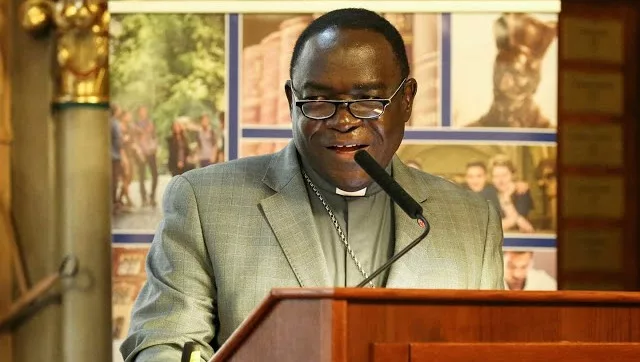
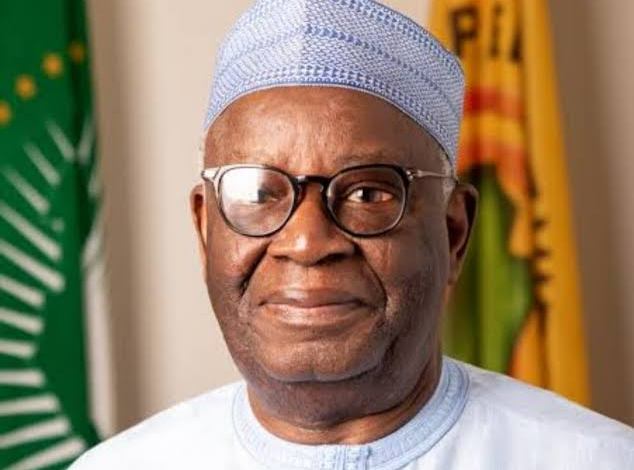
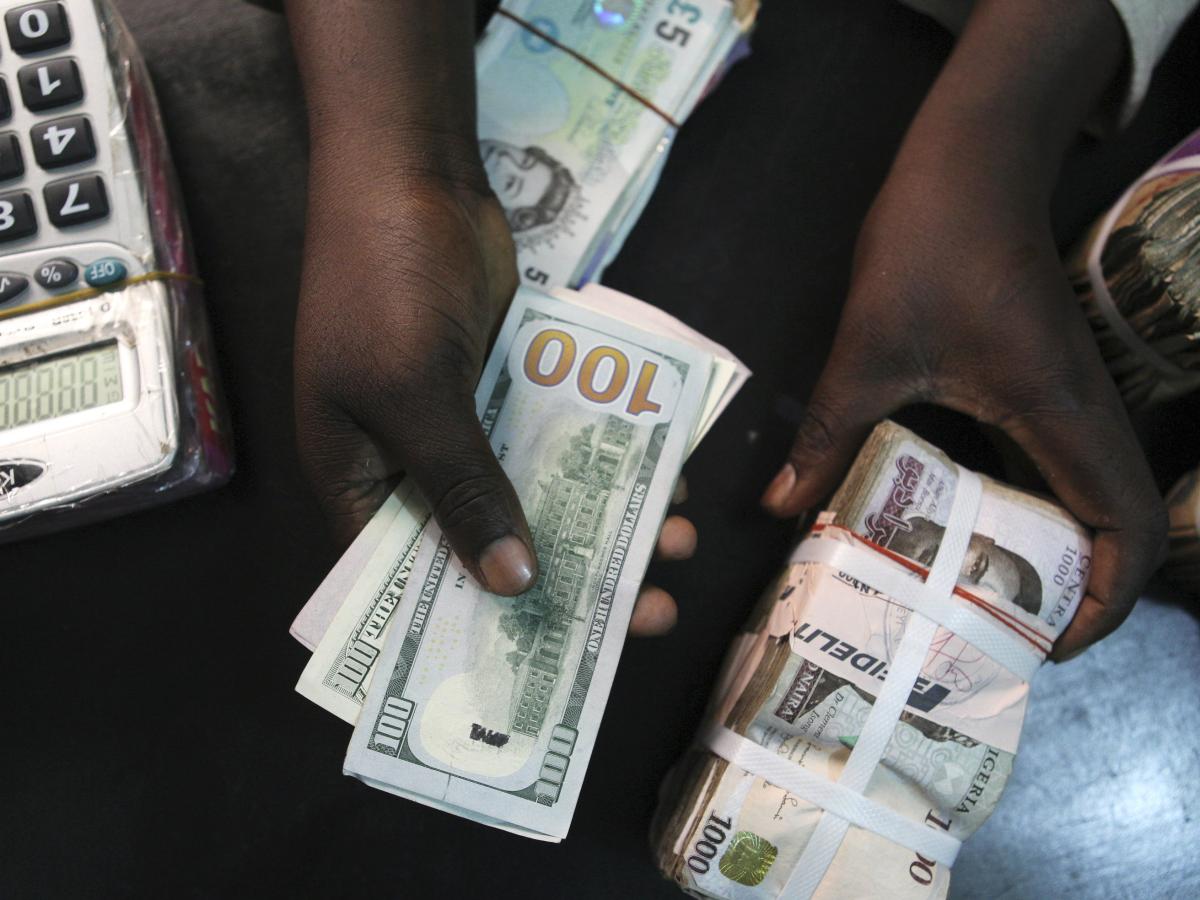


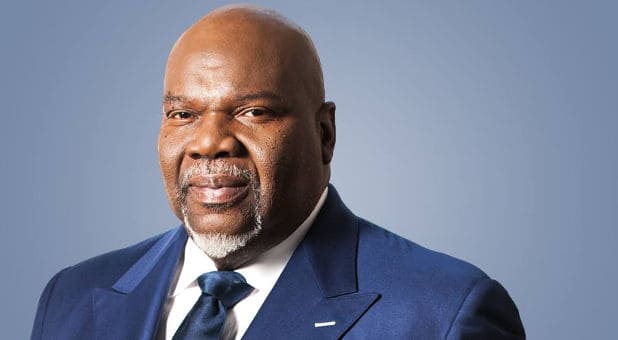
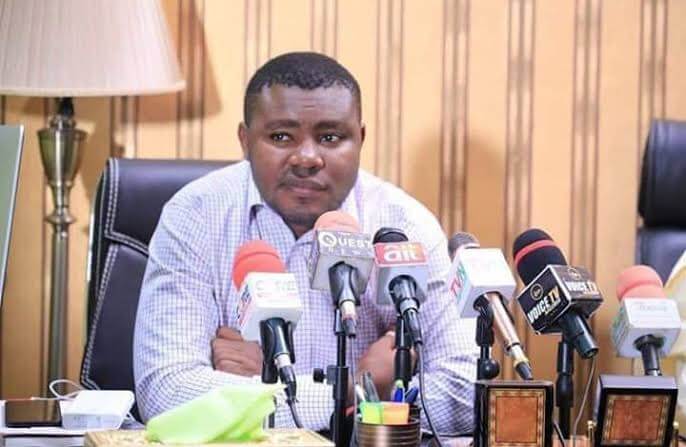

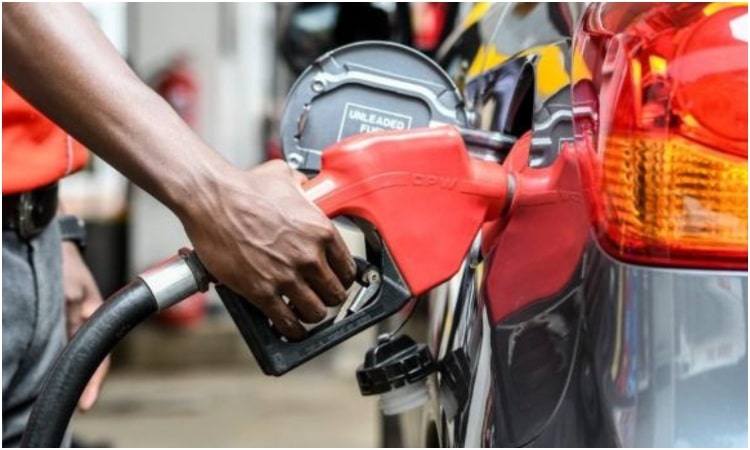
 English (US) ·
English (US) ·